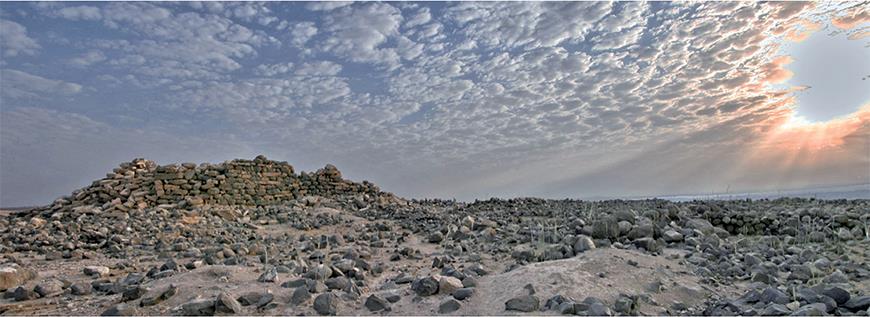
Unearthing Balua: Journey Through Jordan's Ancient Moabite, Ammonite Heritage
“The site covers an area of about 16 hectares making Balua one of the largest sites in the Karak region. The main features and visible remains of the site can be dated to the Iron Age [main and eastern parts of the site], Roman [north-western part of the site] and to the Middle and Late Islamic periods [south-western part of the site]. Hellenistic/Nabatean period remains have also been found in lesser degrees,” noted Professor Craig Tyson from D'Youville University.
Moab was originally a name for an area, and the people living in it took its name,“Moabite.” This is different from the Ammonites (literally,“the sons of Ammon”) who had a kinship name. The Kingdom of Moab changed in size over time. At its maximum it extended up to about Madaba in the north and down to Wadi al-Hasa in the south. When exactly the Moabite kingdom began is difficult to say for sure, but by the middle of the 9th century BC, the kingdom was consolidated by Mesha of Dhiban. The kingdom appears to have collapsed sometime during the 6th century.
Pottery from the Bronze Age has been found at Balua, Professor Tyson continued, adding that though no buildings from that period have been uncovered yet.
“The massive remains of the Iron Age, including a casemate fortification wall, and a large central fortress or Qaṣr, suggest an important role in Moab,” Tyson elaborated.
Tyson studied ancient history, languages and archaeology and one of his academic interestsis theancient Ammonites.
At Balua,“No temples or shrines have been identified yet. Some items of a religious or cultic nature have been found, including a variety of figurines, a small broken inscription on pottery that probably includes the name Chemosh, which is the name of one of the gods associated with Moab,” Tyson said, noting that the Balua Stele, found in 1930, contains images of a religious nature, including a god and goddess that are represented in an Egyptian manner.
“The exact date of the Balua Stele is debated, with dates ranging from the 13th–11th centuries BC or even down into the Iron Age,” Tyson highlighted.
A Nabatean period podium discovered in front of (to the east) the Qaṣr in 2008 is possibly to be understood as an altar, although no unambiguous cultic remains were discovered along with it.
“Also, only one basalt volute fragment has been discovered so far. It was found reused in the Nabatean period podium,” Tyson explained.
Regarding similarities between Ammonite and Moabite religious practice, professors stated:“As far as we can tell, Ammonite and Moabite religion were both polytheistic with a variety of gods and goddesses worshipped. The images on stamp seals from the areas, but mostly from the Ammonite area, display a variety of gods and goddesses.”
Furthermore, the personal names on some of these seals also include the names of some of these deities.“ It appears that a god named Milkom or El was a primary deity among the Ammonites, or at least among the elite. Among the Moabites, Chemosh appears as a primary deity, in particular on the famous Mesha or Moabite Stele that was found in Dhiban. The Bible also uses the names Milkom and Chemosh to speak of the gods of the Ammonites and Moabites respectively,” Tyson underlined.
It is difficult to distinguish differences in religious practices,”The evidence we have for religious practices-temples, shrines, altars, figurines and model shrines, some specialised pottery and other unique objects-is similar throughout much of Jordan during the Iron Age. The Ammonites and Moabites might have used these items differently or used them to worship different gods and goddesses, but it is difficult to tell from the objects themselves,” Tyson underscored.

Legal Disclaimer:
MENAFN provides the
information “as is” without warranty of any kind. We do not accept
any responsibility or liability for the accuracy, content, images,
videos, licenses, completeness, legality, or reliability of the information
contained in this article. If you have any complaints or copyright
issues related to this article, kindly contact the provider above.


















Comments
No comment